QuestionMY duaghter has started to keep 2 common goldfish. We set up the tank for 1 week before introducing 2 goldfish we included some oxygen plants from day 1. The tanks capacity is slightlty less that 15 Imperial gallons . We have a filter and a light that runs for 12 hrs a day.
At the end of the first week with the 2 fish in it we had the water tested at the place we bought it form. The NITRITE levers were sky high. I have changed 25% of the water three times now (the water is treated and left for some hours before adding it to the tank) I have added "good bacteria" after changing the water. The filter has not been changed yet. Now at the end of the second week of fish in the tank, and brown algea is forming on the gravel and sides of the tank. I am looking for confirmation that due to the young age of the tank this behaviour is normal.
I am looking to introduce 2 to 4 more goldfish over the comming weeks
Q1) Should I treat the tank for the Alge?
Q2) Can you make any recommendations of how I should progress
AnswerHi Don;
Keep making those water changes and just scrape the algae off. New tanks commonly have brown algae. It is a sign of an immature system. I am against using chemicals for it because it is basically just controlled doses of poison. It just isn't a good idea. Most fish will not breed with this junk in the water, so that really tells us something about it is just wrong. The fish tend to be lethargic too. Yikes! Much better to treat the cause instead. In your case the cause is simply "New Tank Syndrome.
If you use water conditioner, you really don't need to let the water sit. Adjust the temperature from the tap, add conditioner and pour it into the tank. Chlorine, chloramine and stress reducers are instantly working if you use a good water conditioner.
Wait to add any more fish until at least 2 more weeks. The nitrites and ammonia have to be "zero". If you maintain the tank very well (change 25% of the water and vacuum the gravel every week) don't overfeed, you can add 2 more goldfish at the MOST. They are very messy fish that will need a 55 US gallon tank in a year or so. They live to be over 10 years old and get 6 to 8 inches long.
If the filter gets plugged before the break-in is over, rinse the pads in a container of tank water very gently. This will get rid of the crud, but hopefully leave most of the benfecial bacteria on the pads. Don't overfeed the fish and it will help keep the filters cleaner too. Your tank is cycling very quickly. Usually a nitrite level isn't seen until the 3rd week. Keep testing and changing the water.
Below is a copy of my article on new tanks to help you understand more about it. If you already know this stuff, ignore it. Sounds like you have a pretty good knowledge of it already. Keep up the good work!
**********
New Tank Syndrome or Break-in Period
So you have a new tank and you filled it up, put the filter together, mounted the heater into place and turned on the lights. You have all the plants and decorations where you want them....
You are ready for fish.
But, your filter is not ready for a full tank of fish yet.
The filter is running and moving the water and cleaning out crud, right? Of course!
But a very important part of your filter is the part you can't see. An aquarium filter removes the larger visible stuff, but it also must remove the dissolved fish waste that turns into ammonia in the water. To do this, special bacteria must grow in the filter system and on the particles of gravel in the bottom of your tank. This process occurs even on a limited scale in little fish bowls that have no filter in them.
This is "New-Tank Syndrome" or the "Break-in Period". The entire process takes 6 to 8 weeks to complete because these "nitrifying" bacteria grow quite slowly.
Start off with only two hardy fish for every ten gallons of water and don't add more until the 6 to 8 weeks has gone by. Hard to be patient, but it is worth it to keep your fish alive and healthy. As a matter of fact, the bacteria cannot develop without fish in the tank. You can let that tank sit forever without fish in it, but as soon as the first fish goes in the process begins. Avoid changing the filter pads during break-in. This removes the bacterial colonies that are essential to a balanced aquarium. You can rinse the filter pad out in a container of aquarium water. This will preserve most of the bacteria colonies while still allowing your filter to flow freely. Even using bacteria additives and water conditioners when you first set up the tank will not make a tank cycle by itself. If there are no fish to provide food (fish waste) for the bacteria, the beneficial bacteria cultures will die and you will have to start the colonies all over again once fish are added to the tank.
Feed your new fish VERY lightly. Any excess food will cause additional waste your system cannot afford to have right now. If you see food floating around or lying on the plants and gravel after five minutes, too much food is going into the tank. Cut back a little each time you feed until it is ALL gone 5 minutes after you feed them.
During this "break-in period" your tank will become cloudy and milky looking. You may have to tolerate this for the entire break-in period but it is only temporary. Changing 25% of the water three times a week until the break-in period is over helps a great deal. Changing water reduces the ammonia and nitrites that rise while the bacteria continues to multiply. If ammonia and/or nitrites become too high, your fish will become stressed and possibly die. Use a good water conditioner when you replace the water and make sure it is the right temperature to avoid shocking your fish.
When the break-in is over after 6 to 8 weeks and there are no nitrites or ammonia present in the water you can slowly add more fish. Add one or two every week until you reach the desired population. This allows the bacteria to adjust to the new population every time before adding more. Monitor the nitrites and ammonia to be sure they don't come up. If they do, make a 25% water change and check them again. Don't add the next fish until the levels are down again.
The safe maximum population for any size tank is one inch of adult fish for every gallon of water in the tank. Do some research to be sure of the fish you are interested in. Even though they are small when you buy them, you have to base your population calculations on full-sized adult fish. Many hobbyists have up to two inches per gallon but this can be risky. If a water quality issue arises or a disease occurs it will spread fast and furious in an over-populated tank. In any case, 25% water changes every week to two weeks are absolutely essential for the health of your fish.
Following these guidelines will help you get your new tank on the right track.
**********
Followups welcome
At Your Service;
Chris Robbins
Come on over and join us on the freshwater fish forum at About.com to get even more information too;
http://forums.about.com/ab-freshaquaria/start
My member name is ChrisR62. See You There!

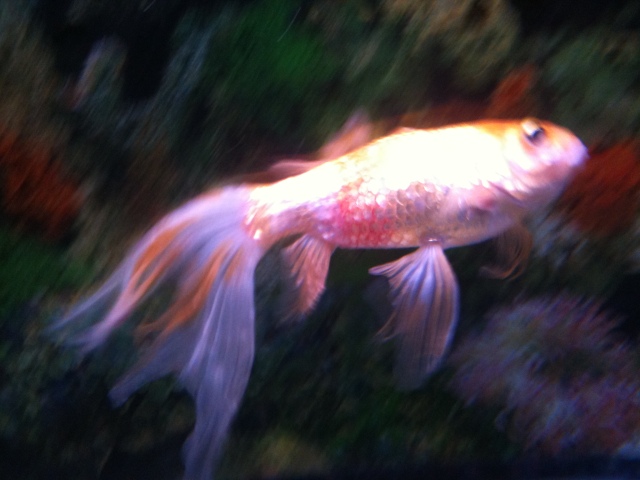 Gold fish Symptons
Question
Goldfish
I have a goldfish that is 20 years ol
Gold fish Symptons
Question
Goldfish
I have a goldfish that is 20 years ol
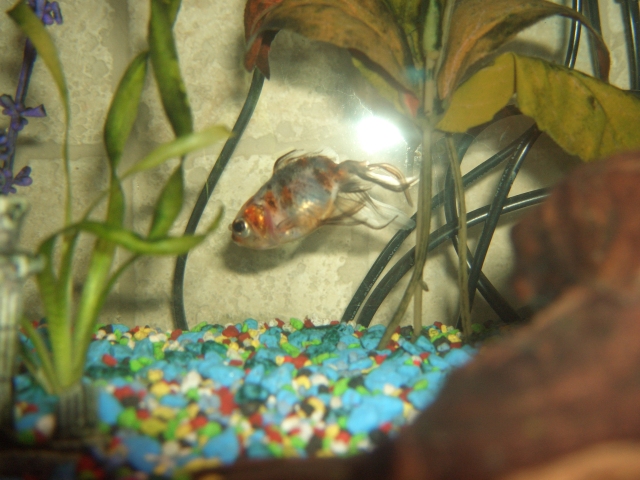 My sons Calico Orando - Bubbles!
QuestionBubbles
QUESTION: Weve had Bubbles for a
My sons Calico Orando - Bubbles!
QuestionBubbles
QUESTION: Weve had Bubbles for a
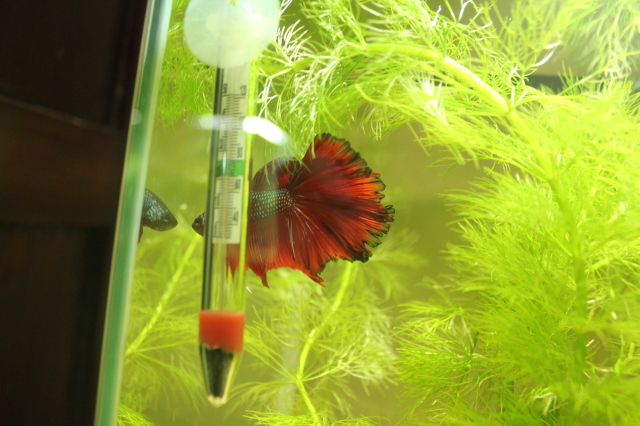 Melafix
QuestionHis back fin
QUESTION: Hi,
Its alex aga
Melafix
QuestionHis back fin
QUESTION: Hi,
Its alex aga
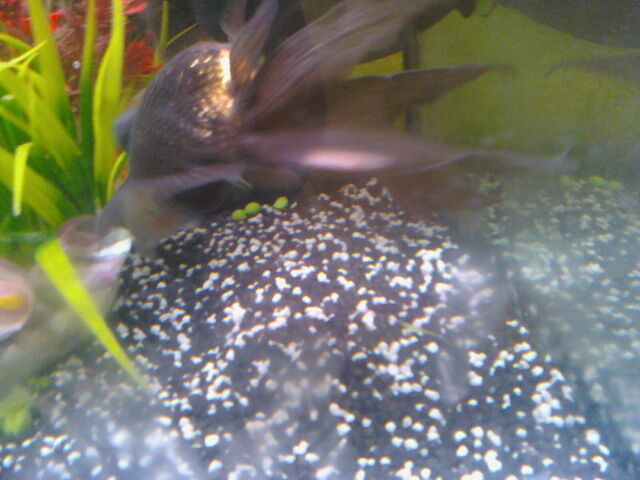 RE: Sick blackmoor
Question
Blackie
Hi,
I just want some advice on a blac
RE: Sick blackmoor
Question
Blackie
Hi,
I just want some advice on a blac
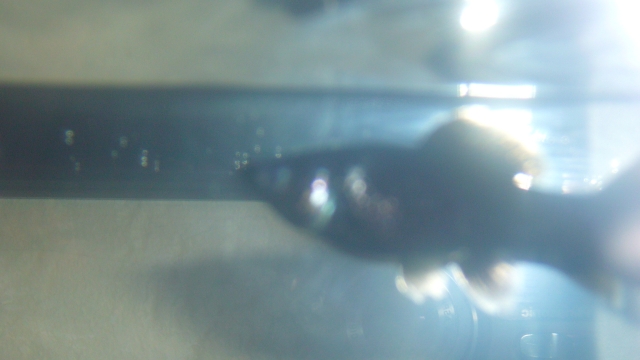 sick mollie
Question
sick mollie
I have a black mollie that is moth
sick mollie
Question
sick mollie
I have a black mollie that is moth